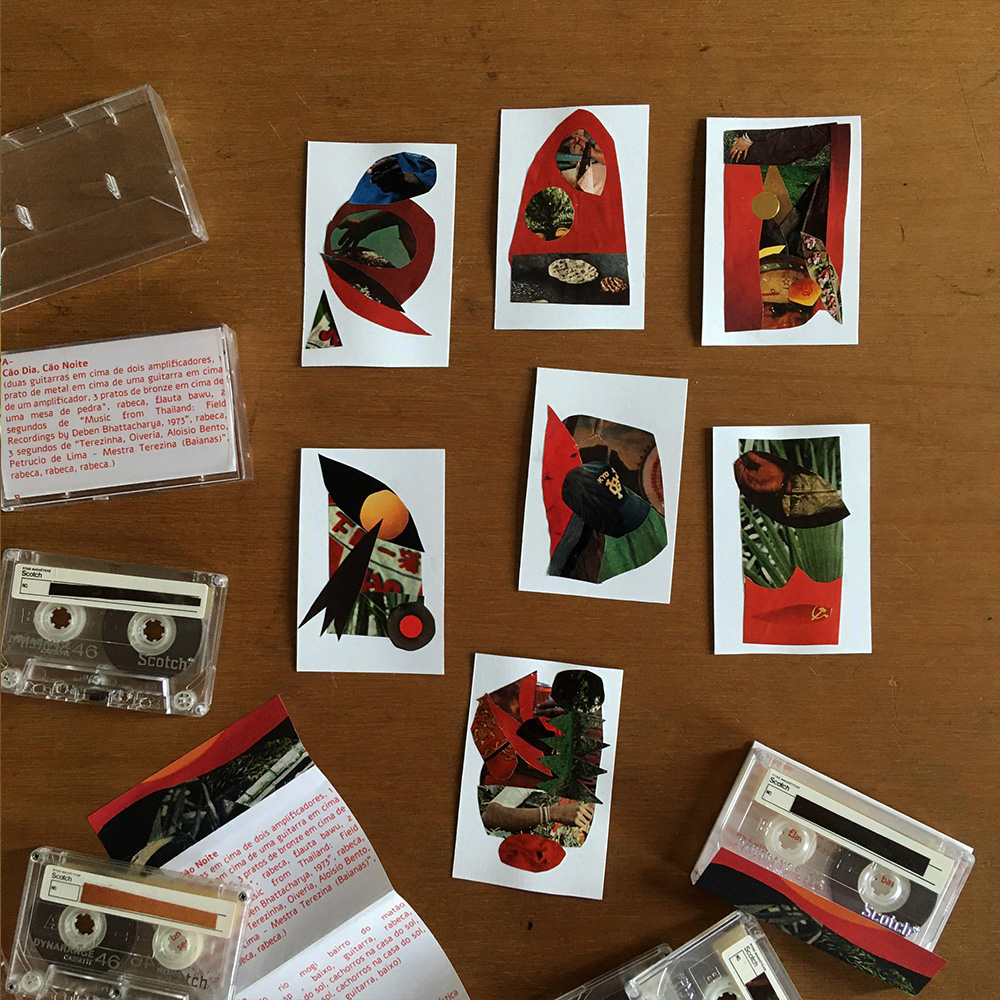Bruno Trchmnn ‘Cão Dia, Cão Noite’
digital+cassette, 2021
Brava Edição #25
Cão Dia, Cão Noite
(two guitars on top of two amplifiers, 1 metal cymbal on top of one guitar on top of one amplifier, 3 bronze cymbals on top of one stone table*, rabeca, bawu flute, 2 seconds of “Music from Thailand: Field Recordings by Deben Bhattacharya, 1973”, rabeca, 3 seconds of “Terezinha, Oiveria, Aloisio Bento, Petrucio de Lima – Mestra Terezina (Baianas)”, rabeca, rabeca, rabeca.)
Enxada
(mogi riverside matão neighborhood pirassununga-sp, bass, guitar, rabeca, dogs at casa do sol, dogs at casa do sol, dogs at casa do sol, dogs at casa do sol, bawu flute, bawu flute , guitar, bass)
Duas Canoas
(qinqin banjo, qinqin banjo)
*In 2017 I participated in an artistic residency at Casa do Sol in Campinas-SP, poet Hilda Hilst’s house. The stone table is in it’s garden. The dogs that appear in these recordings are also from Casa do Sol.
Compositions, bass, guitar, rabeca, bawu flute, qinqin banjo, cymbals, field recordings, samples by Bruno Trchmnn
Recorded and produced by Bruno Trchmnn between 2017 and 2021
Mastering by Igor Souza at Mitra Studio /SP
Collages by Bruno Trchmnn
Released on Brava Editions in Spring of 2021
Cão Dia, Cão Noite is a backpack album, recorded with a small Zoom H6, in different times and places, between 2017 and 2021. Its a backpack álbum cause it was built gradually, with the sounds one could carry on its back, like someone trying to bring a pile of stones from one place to another, a little at a time, until a shelter is raised. As the work progressed, at some point it was necessary to go out to find this or that specific element or catch this or that sound that was left on the house floor or in the bottom of the bag.
Perhaps this is a fancy way of saying that this album is a collage work. Field recordings, everyday improvisations, crude recordings, small loops taken from records, a handful of banalities, of what “was possible to do”. Maybe it’s only by the accumulation of these scraps that you can build something, a mark or small fire. Stacking things, materials, is perhaps one of the oldest ways of leaving marks. We build a lot of things by piling up junk. In Brecht’s poem “Questions from a worker who reads”, the worker questions “Who built Thebes of the seven gates? /In the books you will read the names of kings; /Did the kings haul up the lumps of rock?”. It’s junk, stones, sounds, things that we hold in our hands, the material weight of everyday life that raise marks. And not the magic names, the spheres’ music and the circular time of the kings.
I wonder if this type of backpack work is a choice or a necessity. It’s certainly not an actual choice, it’s a necessity due limits of space, time and money. But it’s a choice to face these needs, take on these limits, face up to ideas, take on the weight of things. It’s also the limits of Thebes workers, yesterday and today.
_Bruno Trchmnn
Bruno Trchmnn (Sao Paulo / Brazil) – https://brava.etc.br/en-bruno-trchmnn

Limited edition cassettes each one with an exclusive collage art made by Trchmnn
